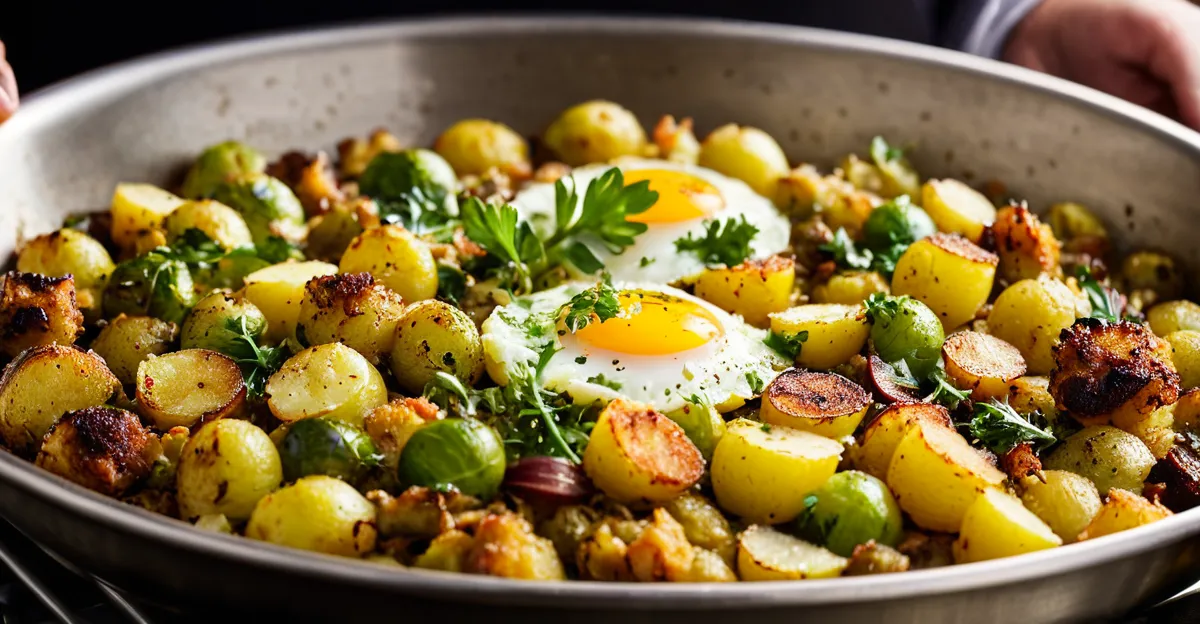Essential Ingredients for Traditional Bubble and Squeak
Traditional bubble and squeak relies on a simple combination of leftover vegetables commonly found in British kitchens. The core bubble and squeak ingredients typically include potatoes and cabbage, serving as the foundation. These staples provide both texture and flavor, offering a hearty base that many recognize.
Apart from potatoes and cabbage, common vegetables like carrots, Brussels sprouts, and peas can also be incorporated to enhance the dish’s taste and nutritional value. Prepared properly, these additions complement the traditional mix without overpowering it.
Also to see : How can you infuse modern twists into a classic bangers and mash?
The preparation of bubble and squeak ingredients involves either mashing or chopping the vegetables. Potatoes are often roughly mashed to bind the mixture, while the cabbage and other vegetables are chopped finely to ensure even cooking. Mixing them thoroughly ensures the flavors meld well during pan-frying.
For a more inventive twist, some cooks swap or add other vegetables, such as leeks or leftover parsnips, expanding the dish’s appeal while keeping its essence rooted in British tradition. This flexibility makes bubble and squeak a versatile way to refresh traditional British leftovers.
Also to discover : How do you create an authentic Welsh cawl stew?
Step-by-Step Guide to Preparing Bubble and Squeak
Preparing a bubble and squeak recipe begins by properly handling your traditional British leftovers, primarily potatoes and cabbage. First, boil or roast the potatoes until tender, then roughly mash them, leaving some lumps for texture. Meanwhile, finely chop the cabbage and any other common vegetables like carrots or Brussels sprouts. This ensures even cooking and a balanced mix.
Next, thoroughly combine the mashed potatoes and chopped vegetables in a bowl. The goal is to create a cohesive mixture that will hold together when shaped, yet not be overly dense. Some cooks add a pinch of salt and pepper to enhance flavor before frying.
The pan-frying bubble and squeak step is crucial. Use a non-stick pan heated over medium to medium-high heat with a little oil or butter. Shape the mixture into flat, round cakes. Cook each side for about 5 to 7 minutes until golden brown and crisp. This technique creates the signature crust that distinguishes bubble and squeak and brings out the best from those tasty leftovers cooking. Turning carefully maintains the cake’s shape and ensures even browning.
Traditional Cooking Techniques and Tips
Cooking bubble and squeak successfully hinges on the right technique. For cooking bubble and squeak, a well-heated pan is essential. Preheat your pan over medium to medium-high heat before adding oil or butter. This step helps achieve a consistent, golden-brown crust that many regard as the hallmark of traditional British pan-fried recipes.
The choice and amount of fat affect crispiness. Use sufficient butter or oil to coat the pan evenly. Too little fat can cause sticking, while excess might lead to sogginess. Additionally, avoid frequent turning. Let each side cook undisturbed for about 5 to 7 minutes for maximum browning.
Common mistakes when cooking bubble and squeak include overcrowding the pan and using a low temperature. Overcrowding releases moisture, preventing crispness. Cooking at too low heat results in a pale, soft finished product lacking the expected texture.
Patience and attention to these details ensure your bubble and squeak achieves that desirable balance: a crisp, golden exterior with a flavorful, tender interior that’s a signature of this beloved British pan-fried dish.
Serving Suggestions and Popular Variations
When considering how to serve bubble and squeak, it’s common to pair this dish with leftover meats like roast beef or ham, enhancing the meal’s heartiness. Adding a fried egg on top is a classic British meal idea, creating a satisfying and balanced plate. Sauces such as brown sauce or mustard mayo also complement the flavors, bringing moisture and an extra zing.
Modern adaptations of bubble and squeak often incorporate additional ingredients or varied accompaniments. Some recipes include herbs like thyme or parsley to freshen the taste. Others mix in cheese, boosting richness and adding a melty texture. Experimenting with spices or including different common vegetables like peas or leeks creates appealing new variations while honoring the traditional base.
Regional twists may emphasize local produce or meats, celebrating British culinary diversity. The flexibility in recipe variations allows cooks to personalize bubble and squeak according to seasonal availability or dietary preferences. This adaptability helps maintain bubble and squeak’s status as a beloved dish that refreshes traditional British leftovers creatively and deliciously.









